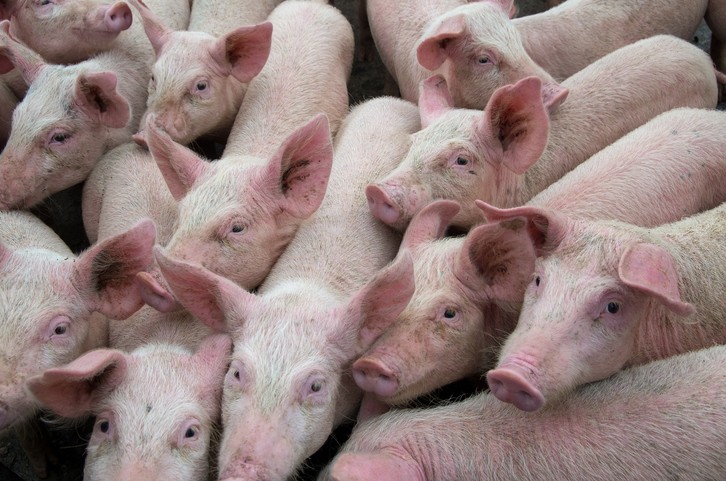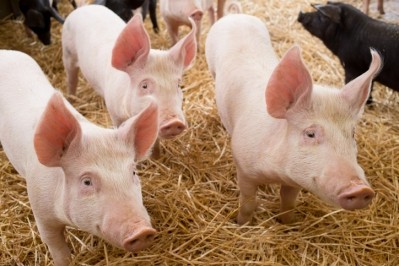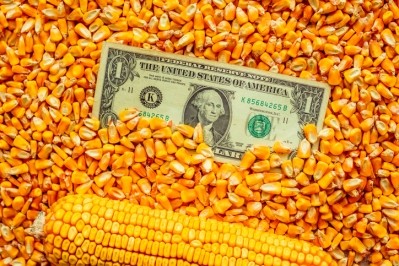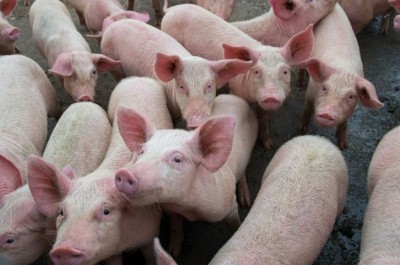Rabobank evaluates ASF impact on pig feed, herd rebuilding process in China

Chinese pork production this year is expected to decline 25% on 2018 levels, said the bank.
We spoke to Justin Sherrard, global animal protein strategist, Rabobank, to gain some insights into the impact of African Swine Fever (ASF) virus on the Chinese swine sector.
He told us pork production in China is not about to stabilize: “We see the greatest likelihood of continuing decline next year; in 2020, we think total pork production could be down another 10% or 15% on this year’s levels.”
Rabobank forecasts the hog herd in China to be down by 50% by the end of 2019.
While pork production and the pig herd are intrinsically linked, the segments are seeing slightly different dynamics, said Sherrard.
“The signal we are looking for the moment is what is happening with the herd, and what that will mean for the feed demand.
"Once you start getting retention within the herd for breeding purposes, then you will see the herd being rebuilt, but no change in pork production."
The price response to the impact of ASF in China is now being seen, with prices topping records, noted Sherrard.
“We are trying to figure out whether the price signal, which has been very strong in the past few weeks, is sufficient to trigger some small-scale producers to restock. What I have observed is that might be happening, but the rate at which the live hog price has risen, the rate at which pork meat prices have risen is faster than the rate at which piglet prices have increased. So, it would seem that the price signal is not yet strong enough for producers to overcome [concerns over] the reinfection risk when calculating whether they should go ahead and restock a barn.”
Beyond China
The ASF virus continues to spread – in other parts of Asia and Europe.
Vietnam has been hit. It is a big market for pork, in many ways, but nothing compared to China – total production in China in 2018 was 54m tons, while total production in Vietnam last year was about 2.8m tons, said Sherrard.
“If we look at the share of the herd that is being impacted in Vietnam, and where we see production being at the end of the year, the numbers themselves are much smaller, but the share of production impacted is quite similar to that in China.
"In China, we expect pork production to be down by 25% and, in Vietnam, that number is closer to 20%.
"Vietnam will continue to face challenges within its herd, and pork production will continue to decline into 2020.”
The situation in Southeast Asia is even more complicated, he said, with ASF still spreading in the region, and there are multiple countries involved.
“Getting Cambodia, Laos or Myanmar and China aligned on exactly what is going on is challenging. If you can’t eradicate the disease in Laos, for example, then you keep running the reinfection risk in Vietnam because of the nature of the border between those two countries, and the same could be said for Cambodia.”
Long-term implications of ASF outbreak
The ASF epidemic will be a multi-year and multi-region issue that brings structural change to global animal protein, said Sherrard.
“The scope of the decline in the Chinese herd numbers is such that it will take years to recover from, but it is also because there is no vaccine. Producers are constantly facing the disease pressure, they are facing a challenge of deciding if they should repopulate, or deciding what is the right process to follow to repopulate, what do they need to do to increase biosecurity to the point where they can be confident that repopulating will allow them to take piglets through to slaughter?”
In fact, it is questionable that China will ever recover, said the analyst.
“The scope is incredible – by the end of this year, 50% of the herd in China will have disappeared – that is a quarter of the world’s pigs."
Breeding companies say their breeding herds are not affected by ASF, but Sherrard reckons the mostly likely route to pig repopulation in China will be through retaining gilts within the herd rather than taking those through to slaughter.
“That is likely why the herd will recover but pork meat production will not necessarily recover.”








